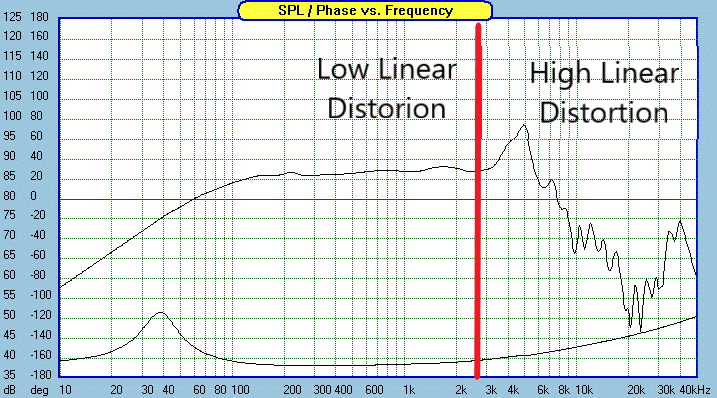(Mis)understanding the Fletcher-Munson Curve
The Fletcher-Munson curve is often brought up in audio forums when people get into discussions of why you should or shouldn’t design speakers that measure flat. The curve, if you weren’t sure, is a graphical representation of how humans perceive relative SPL at a given frequency and is shown in in Figure 1, along with the ISO 226:2003 which replaced it, and is often referred to as an equal loudness contours. It’s often misunderstood, misrepresented, and judged in ways that are not accurate to loudspeaker building, so we are going to try and explain it a little bit in this article.

Figure 1 – Fletcher-Munson and ISO 226:2003 curves
The first step in understanding the curve is understanding how to read it. The Y-axis represents SPL and the X-axis frequency, much like a generic frequency response graph might, and honestly this is where a lot of the confusion probably comes in. The curves represent relative perceived loudness with the baseline level set by 1 kHz. As you can see from the graph below, the 1 kHz line is where the curves always cross at exactly 20 dB increments whereas the other areas a variable as you change SPL level. So if you look at the graph on the 20 dB curve, you can see 1 kHz crosses at 20 dB while 50 Hz crosses at roughly 50 dB. If you move up to the 80 dB curve, you see 1 kHz at 80 dB and 50 Hz now at roughly 83 dB.
What this is telling us is that at low volumes, it is much easier to hear a 1 kHz tone than it is to hear a 50 Hz tone. For a 50 Hz tone to sound like it is as loud as a 1 kHz tone at 20dB, you would need the 50 dB tone to be roughly 50 dB (or around to 3 times louder). But at higher volumes, the 50 Hz tone only needs to be just a bit louder.
So because this is how humans perceive sound, some argue, we should design a speaker to match the equal loudness contours. However, there are several problems with this line of thinking. The first and most obvious is that the curves change level as the volume increases. This would mean that you would need a sliding curve to adjust these levels as you increase the volume. This is actually why old receivers had “loudness” buttons. They boosted the treble and bass and were meant to be used when listening at low levels to make the sound more full, but often times ended up being left on all the time. The technology to do this is getting cheaper and cheaper every day and some of the products on the market implement this using DSP solutions.
Second, you have to remember that humans hear like this all the time. This means when the person in the studio mixing the track you are listening to set levels, he or she was already adjusting for the curves unintentionally. The music was mixed to sound flat regardless of relative output level of each instrument. If you were to actually design your speakers to the curves, it would likely sound a bit odd. The one big problem here is that we don’t know what volume level the track was mixed at, so there could be issues if you listen really loudly or really softly.
But in the end, the goal of a speaker is to reproduce exactly what it is fed. The ideal speaker would be a point source with in infinite bandwidth (0 Hz to 100+ kHz) with a perfectly flat frequency response and zero distortion. This is clearly unachievable, and while all speakers have compromises, the end intent is to get as close to this ideal as possible through various design methods. No one necessarily has the right answer because no one actually achieves the ideal.
Just like mastering the track, there are clearly right and wrong ways to do things, but there is a lot of gray in the middle that is up to interpretation and personal preference. We at CSS believe that our combined years of experience have guided us to make use a great set of design principles which create amazing sounding loudspeakers (SHAMELESS PLUG: that won’t break your wallet by the way!). We hope that once you hear some of our products, you’ll be inclined to agree. In the end, audio is a bit of a journey, and it’s up to you to find your own nirvana.














